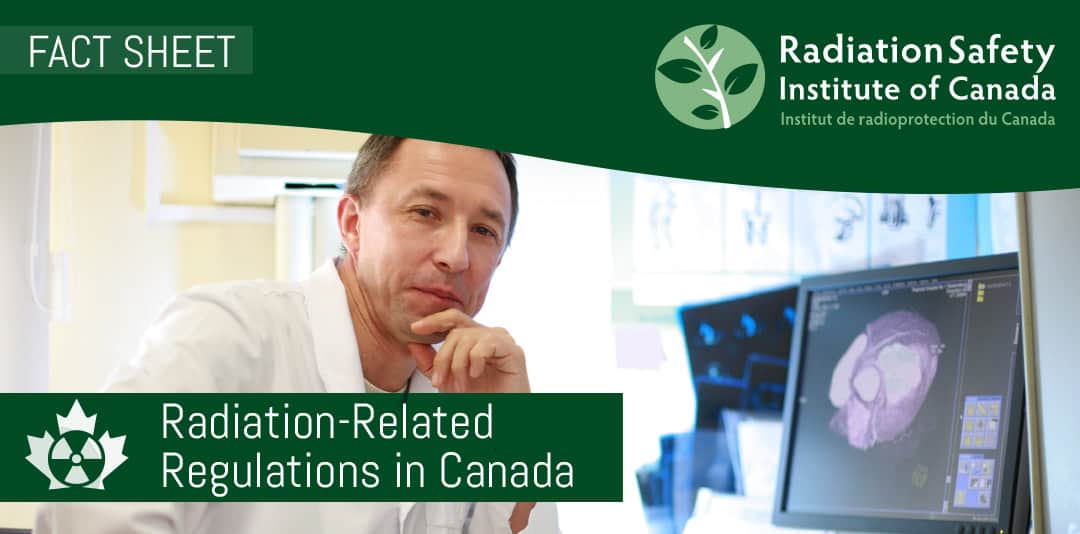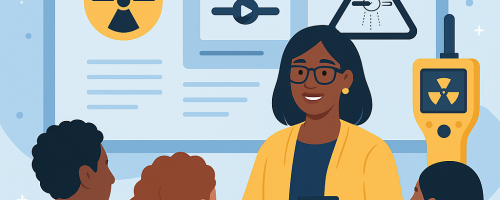What is radiation?
Radiation is a generic term that scientists use when describing the emission of energy. For example, the signal from a radio station radiates away from the antenna. Radiation can exist in many forms, including electromagnetic radiation (radio waves, microwaves, visible light and lasers, to name a few), sound (ultrasound for example), and particles (such as alpha particles emitted during the decay of radon gas). Radiation can also be categorized by its energy, as either ionizing radiation or non-ionizing radiation, depending on whether or not the radiation has sufficient energy to cause ionization when it interacts with matter (knocking an electron out of the orbit of an atom).
Radiation is regulated differently in Canada, depending on its type, its energy, and how it is generated.Federal regulations
The Nuclear Safety and Control Act and its associated Regulations, is in place to regulate the development, production, and use of nuclear energy, and the production, possession, and use of nuclear substances, prescribed equipment and prescribed information. The use of nuclear power, radiation exposure devices, radioactive material, and high-energy x-ray systems, are all regulated under this federal system, including the transportation of radioactive material. The Canadian Nuclear Safety Commission is responsible for regulating the use of nuclear energy, to protect Canadian’s health, safety, security and environment. Their website is http://nuclearsafety.gc.ca/eng/ and they can be contacted in various ways, as listed in the following website: http://nuclearsafety.gc.ca/eng/contact-us/index.cfm
Also under federal jurisdiction is the Radiation Emitting Devices Act and its associated Regulations, which are in place to control the sale, lease, and importing of radiation emitting devices in Canada. The regulations set out the standards that must be met for various categories of radiating emitting devices including but not limited to: television receivers and video monitors/display systems, dental, hospital, and analytical x-ray equipment, baggage inspection x-ray systems, microwave ovens, laser scanners, high energy mercury vapour discharge lamps, tanning equipment, and ultrasound devices. The Consumer and Clinical Radiation Protection Bureau of Health Canada is responsible for the administration of the Radiation Emitting Devices Act and Regulations. Their contact information is found on the following website: http://hc-sc.gc.ca/contact/ewh-semt/hecs-dgsesc/ccrp-prpcc-eng.php.
Provincial and Territorial Regulations
Individual provinces and territories are responsible for regulations around radiation use, for situations that are not under federal jurisdiction, including, for example, the use of x-rays (for both medical and analytical or industrial uses), the presence or use of Naturally Occurring Radioactive Material (NORM),use of lasers, and EMF or Electromagnetic Frequency radiation. Depending on the province or territory, the local regulations may be administered by the same or by different groups (e.g., in Ontario, the Ministry of Labour is responsible for industrial and workplace exposures while the Ministry of Health manages exposures due to the healthcare system). All provinces and territories, and the federal regulators, may participate in the Federal Provincial Territorial Radiation Protection Committee (FPTRPC), which is a group that was created to advance the development and harmonization of practices and standard for radiation protection. Information about the FPTRPC, and how to contact individual members of the various provinces and territories, can be found at the following website: http://hc-sc.gc.ca/ewh-semt/radiation/fpt-radprot







